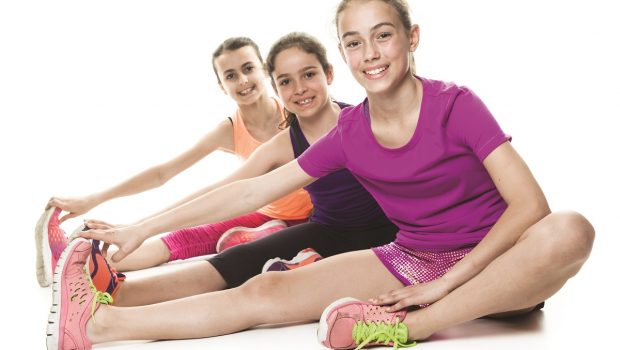Banishing Body-Image Blues
How Teens Can Learn to Love Their Looks
by Amber Lanier Nagle
Many young women don’t feel comfortable in their own skin. A 21st-century global study sponsored by Unilever’s Dove brand found that 90 percent of girls from 15 to 17 years old wanted to change at least one aspect of their physical appearance, especially their body weight. University of Minnesota research following adolescents for 10 years showed that about half of the female participants had dieted in the previous year, twice the number of males.
Tracy Anderson, a mother of two and fitness expert, has spent the last 18 years working with women seeking balance in their bodies. In her recent book, Total Teen: Tracy Anderson’s Guide to Health, Happiness, and Ruling Your World, she observes, “Teens are depleted from comparing themselves to the shapes of others and from scolding themselves: ‘I should be thinner, I should be able to fit in those pants, I should be in better shape.’ But looking good on the outside must start with feeling good on the inside.”
Monitor Thoughts
Anderson believes we feel most happy and fulfilled and accomplish the most when our minds are calm, clear and alert.
“If young women learn to connect with their mind, identify when their thoughts are anxious or stressed, and practice conscious breathing and meditating to regain a calm, centered state, they’ll be able to re-balance themselves for the rest of their lives,” she says. “By keeping a thought journal for a while and noticing when their thoughts have negative undertones, they can retrain their attitude.”
Live a complaint-free day once each week. Every time a negative thought pops up, expel it and focus on a positive aspect of the idea or experience. Also invest a few moments each day feeling thankful for successful aspects of life. “After a while, these exercises become habitual,” says Anderson. “Happy, high-achieving people fill their minds with positive, uplifting thoughts, affirmations and sincere gratitude. It’s widely proven to work.”
Eat Well
“Most teens can eat junk food all day long and still wake up the next morning ready to take on the world,” Anderson says. But such an unhealthy routine “shapes eating patterns for the rest of their lives, eventually catching up with them.”
She strongly believes every young woman should routinely ask herself, “Is this real food?”
“A potato is a real food, or whole food, but instant mashed potatoes are processed. A fresh ear of corn is a whole food; corn chips are processed. If you want to feel strong and healthy and look great, eat whole foods,” says Anderson.
Also, note how the body responds to eating specific foods. Here again, a journal can help. “Jot down how a food made you feel after 15 minutes, an hour and two hours. Are you alert or sluggish? What signals are your stomach and brain sending? It’s useful information to make better ongoing food choices,” Anderson advises. She also advocates drinking plenty of water and eating organic foods when possible, and warns teens against skipping meals or snacks when their developing bodies feel the need for fuel.
Move More
For some teens, exercise movements don’t feel comfortable or natural, which hinders them from doing healthful exercise. “I’ve found that if a young woman practices exercises for a while privately, she’ll become more comfortable and confident over time,” says Anderson. “It’s like learning a foreign language, musical instrument or any skill. You master the basics first and build on them. With practice, you start feeling more at ease.”
In her book, Anderson offers many step-by-step, illustrated workout moves designed to daily tone arms, legs and abs, and increase strength and flexibility. Many incorporate fun dance components that work well with music.
“Regular exercise releases endor- phins—the hormones that make us feel happier and better about ourselves,” she says. “For young women navigating the emotional ups and downs associated with menstrual cycles and puberty, exercise can be a lifesaver.” Whether it’s yoga, walking, martial arts, dancing, hiking, biking, horse- back riding, climbing, skiing, gymnastics or tennis, teens need to find “some kind of movement and activity to become part of their everyday life.”
A University of Wisconsin meta- analysis of 77 studies examining women’s body images suggests body dissatisfaction is a risk factor for eating disorders and a significant predictor of low self-esteem, depression and obesity. Helping young women build, strengthen or regain their positive body image and self-esteem works to empower a new generation and enables them to enjoy happier, healthier lives.
Amber Lanier Nagle is a freelance writer in Northwest Georgia (AmberNagle.com).
Image: Lopolo/Shutterstock.com
<












